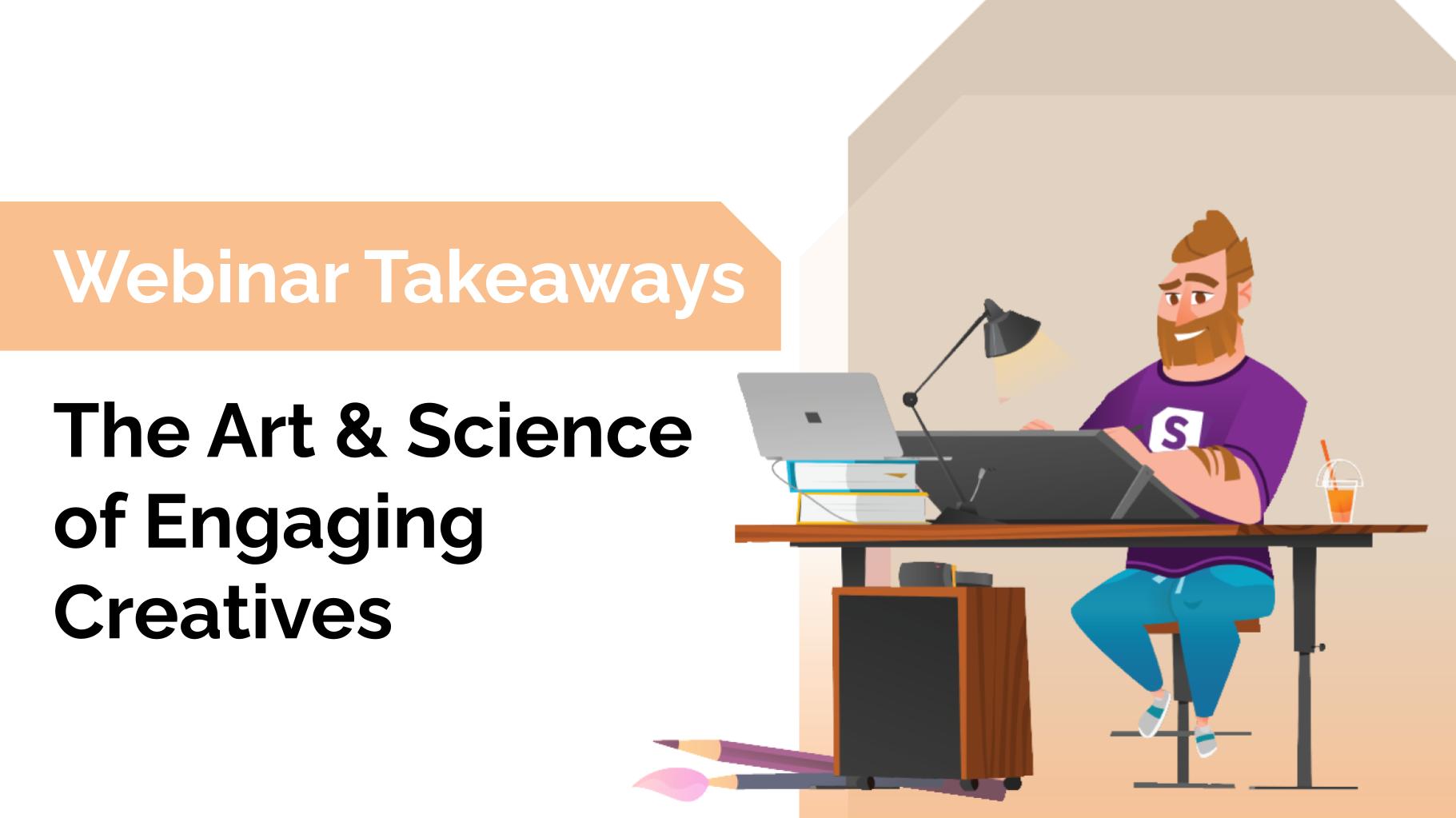During our webinar “The Art & Science of Engaging Creatives that Convert Webinar,” our panelists Claire Rozain from Puzzle Society, Misha Syrotiuk from Playvalve, João Vieira da Costa from Replai and Theuri Keith from Carry1st were guided in a conversation by Pau Quevedo on the evolution and importance of creatives in the mobile app advertising industry.
How do you think creative importance has evolved, and how has that affected your daily work?
The question that kicked off the webinar opened the discussion on how the relevance of creatives has evolved and how those changes have affected day-to-day work. Misha from Playvalve, who has been working in the mobile marketing space for ten years, pointed out how, after privacy changes, creatives have become the new way for companies to talk to users.
Initially, creatives took a backseat to data-driven targeting and algorithms in an era dominated by tech giants like Facebook and Google. However, more recently, the landscape shifted, and they have emerged as a crucial way to engage with users more personally.
According to all panelists, the evolution of creatives and their importance can be summarized in:
- Changing formats: there’s been a shift towards more engaging and immersive user ad experiences, from static images to videos and, more recently, playable ads.
- A user-centric approach: nowadays, catering ads to needs and user preferences is key. Creatives that resonate on an emotional or social level often prove to be more effective in driving engagement.
- Adaptation to society shifts: being aware and aligned with societal trends and consumer behavior is of utmost importance for marketers. The increase in time spent on screens daily, for example, underlines the need to create compelling and visual storytelling to catch users’ attention.
Following the discussion on how the importance of creatives has evolved led us to the next question.
What are the trends in creatives for 2024?
- Purpose-driven creatives
Industry expert and consultant Claire Rozain from Puzzle Society began by sharing how she believes that one of the most notable creatives trends for 2024 is to generate purpose-driven creatives. She pointed out that, in a time marked so much by global challenges, consumers are looking for more than just products or services. They want meaning and connection. Claire believes that one of the most important trends is for ads to showcase value propositions and tell users what they can gain from downloading and using the app, for example, allowing them to have benefits and access to an ecosystem or even find a way to belong to a community.
- UGC: Ads that don’t feel like ads
Theuri Keiths from Carry1st jumped in and shared an interesting insight about using User Generated Content (UGC) as a big creative trend in 2024 across different regions. As consumers are increasingly attracted to more authentic content that feels relatable, UGC allows for the creation of a connection between brands and users. He pointed out that UGC is great at keeping people engaged and not clicking the skip button by showing ads that don’t feel like ads.
- Creatives as the new targeting system
Rather than relying solely on traditional targeting methods, there’s a growing trend toward leveraging creatives to reach and resonate with the right audience. This approach emphasizes crafting compelling, contextually relevant creatives that capture audience attention and drive meaningful interactions.
How are marketers handling creative production in a landscape of constant change?
Several key strategies and interesting observations came from the panelists on approaching creative production.
The first advice came from Theuri, who emphasized being organized when deciding how many to produce. He suggests being aware of the fluctuating demands during different seasons, making communication seamless between team members to reduce reiterations, and, if possible, having an in-house team dedicated to production.
Another important insight came from Misha when he explained the importance of tailoring creative production to the app’s lifecycle. The volume and type of creatives produced vary depending on the age of the app, genre, and target audience. For example, new game launches typically require a higher number of creatives to establish visibility and engagement, while evergreen titles might focus more on maintaining brand presence with fewer creatives.
João from Replai added that increasing production volume for predictability is also an interesting approach. Very closely related to the previous point of using creatives as a new targeting system, Joao pointed out that marketers aim to achieve better predictability in UA outcomes by generating a larger quantity of creatives and analyzing their performance with machine learning algorithms.
What about creative testing?
Now that we have insights regarding production, it is time to discuss the best practices when testing and measuring creatives’ performance.
João from Replai continued the conversation by explaining what he believes are the main 3 aspects to consider when testing creatives:
- Forcing traffic to each creative
- Use proxy regions
- Have a control creative
Misha had a different approach and explained how adopting a mindset focused on identifying and eliminating underperforming creatives, rather than only identifying winners, can help streamline creative testing and optimize resource allocation.
Actionable tips to improve your creatives
- Use User Generated Content (UGC)
- Rely on existing tools such as TikTok Creative Challenge
- Benchmark and reiterate your creatives
- Have set KPIs
- Focus on measurement
- Use AI for ideation and to overcome creative blockage.
